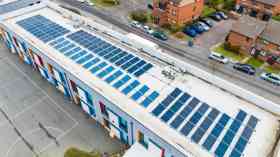Following the National Audit Office report revealing that 700,000 pupils attend schools requiring major rebuilding or refurbishment, BESA c
Latest Supplier News
Borg & Overström is a UK manufacturer of premium drinking water solutions. For over 20 years Borg & Overström has developed sustainable, bottle-less, hygienic, drinking water dispensers with the aim to provide exceptional, safe, self-service drinking water into schools, universities, workplaces and communal spaces.

 The potential for serious fires to occur in schools and other educational establishments has been highlighted over a number of years by fire professionals. This has also been illustrated graphically in numerous incidents across the United Kingdom where schools buildings have suffered disastrous damage caused by fire.
The potential for serious fires to occur in schools and other educational establishments has been highlighted over a number of years by fire professionals. This has also been illustrated graphically in numerous incidents across the United Kingdom where schools buildings have suffered disastrous damage caused by fire.








